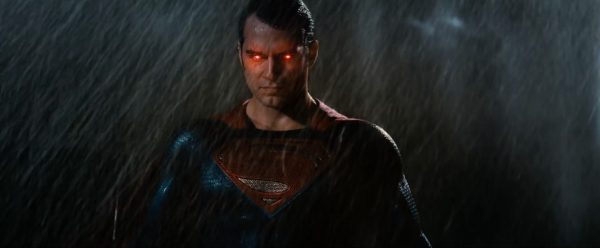The overriding sentiment on leaving Batman v Superman: Dawn of Justice is a sense of being underwhelmed. Having been in competition for comic book sales, and now determined to outdo each other in the box office, DC’s most recent answer to Marvel (which is safely beating DC in ticket receipts) is at once too safe and too busy. As per his previous works, including the visuals-driven likes of 300 and Watchmen, director Zack Snyder strives to distinguish his films from Marvel aesthetically, and yet his latest is found wanting in imagination and, at times, logic when it comes to plot and character.
As the title promises, Batman is the first character of the revered protagonists that we are exposed to in the film, with Clark Kent/Superman having already been established in the prequel Man of Steel. The opening scenes of Batman v Superman see a young Bruce Wayne look helplessly on as his parents as are murdered, and soon after accidentally fall into the bat cave which will become his superhero base in adulthood. While the sequence tries to break free from Christopher Nolan’s Batman Begins through overtly-stylised cinematography including lots of slo-mo, it still looks much too like its predecessor. It seems less like a homage than a lack of ideas as to how to reimagine the renowned origin story differently. Moreover, the next scene is not visually dissimilar from the alien attack finale of The Avengers. It sees a now grown-up and successful CEO Bruce Wayne watch the battle between Superman and Zod, as per the climax of Man of Steel.
Plot-wise, Batman v Superman takes place approximately two years after the events of Man of Steel, and while Batman protects the people by working to unravel a threatening conspiracy, we also follow Superman as he continues to save Earth’s feeble humans from catastrophe. However, with a penchant for occasional bad timing, he is now becoming viewed as a villain or nuisance as much as a hero. He begins to increasingly fall out of the public’s favour, most notably that of politicians and of Batman. Superman is also kept busy as alter-ego journalist Clark Kent, who has more than a few run-ins with his boss, Perry White (Laurence Fishburne), and also works hard to protect his helpless (this being the key word) girlfriend Lois (Amy Adams), as she is constantly in danger.
For every pathetic, backward, passive female victim, there is a superhero woman to keep the feminists happy. Enter the welcome appearance of Wonder Woman, a.k.a. Diana Prince (Gal Gadot), a comic character that has been viewed on occasion as too camp and has seen varying degrees of success when adapted for the big or small screen. Actually, the Wonder Woman story arc here weaves smoothly into the dominant storyline, and a sense of intrigue is retained around the character that can be developed on in the sequel. She also proves herself more than capable of holding her own in the final action-packed showdown.
While not giving off the same effortless sense of charm that Christopher Reeve originally brought to the role, Henry Cavill has the appropriate presence and strength necessary for Superman. As the villainous Lex Luthor, who is frustrated by his ‘knowledge without power’, Jesse Eisenberg works hard to make the role his own and for the most part succeeds at bringing the sense of devilishness, arrogance, and lunacy befitting the character. Ben Affleck’s performance as Wayne/Batman, a casting decision which was met with some scepticism when it was announced, can seem a bit safe and this may come from a fear of overdoing the role. Affleck gets the majority of screen time and delivers a likeable performance, effectively articulating the sense of burden carried by Wayne as well as pulling off the physical prowess of his superhero alter ego. All three male leads establish an underlying fury and determination that drives their characters so that the triangular battle for good versus evil is fun to watch. At the same time, there are occasions when their character motivations seem inconsistent or downright illogical.
While there is an interestingly evocative symbolic use of light and shadows in the cinematography throughout the film, there is not a great deal of attention given to production design. The viewer does not get a real sense of Metropolis or Gotham, the designs of which have been intrinsic to previous adaptations of the DC comic canons (consider Tim Burton or Joel Schumacher’s films, for example – while both were very camp, they were also unforgettable). There is an awful lot packed into Batman v Superman, character-wise and story-wise, and while it amuses for its duration, not much sticks.

